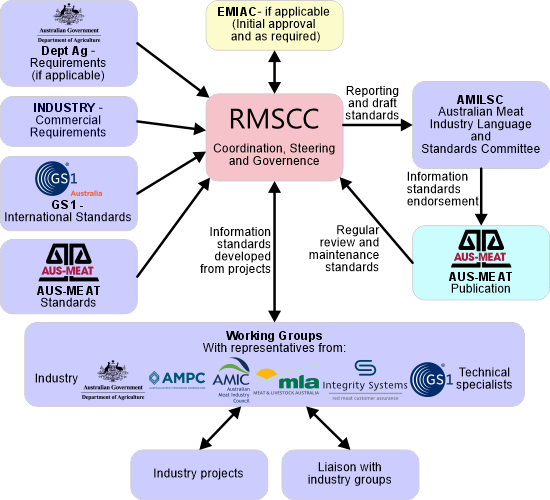The Red Meat Supply Chain Committee (RMSCC) focuses on identification and information technologies and systems, from livestock production through to domestic retailers and international markets. This area of focus is referred to as 'Supply Chain Information Standards'.
The role of the RMSCC is to:
- Providing a path for reporting to the AMILSC on industry program and project activities related to information standards along the red meat supply chain.
- Providing a path for communication back to government and industry bodies on relevant supply chain information standards, projects, programs, and related activities.
- Providing coordination, steering and governance support to programs and projects that request such support and only where the programs and projects activities relate to information standards along the red meat supply chain.

Standards Publishing